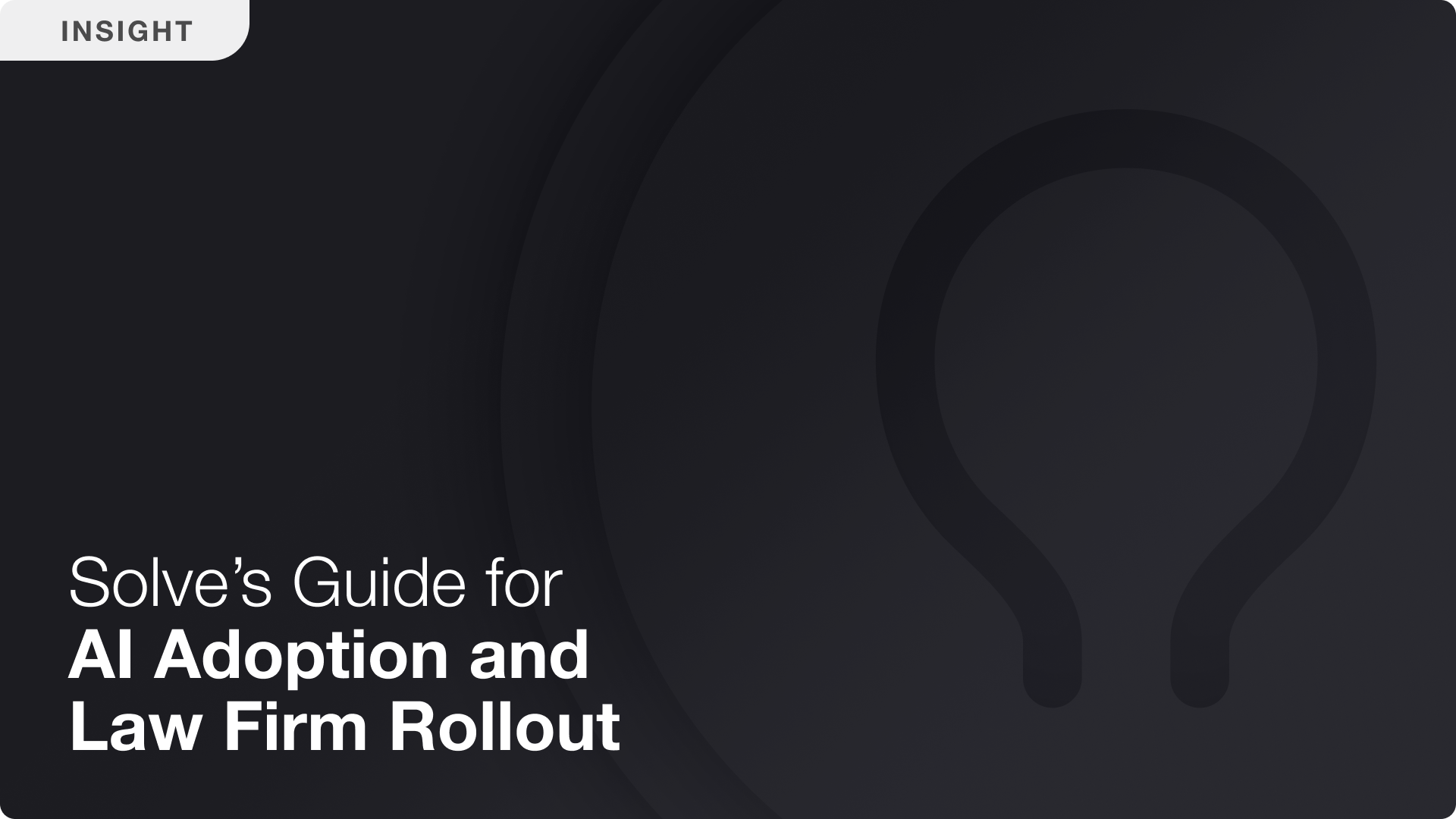What is Patent Mapping and Claim Analysis with AI?
In recent years, Artificial Intelligence (AI) has begun to play an increasingly important role in various industries, and intellectual property (IP) is no exception. One of the key areas where AI has the potential to make a significant impact is patent claim mapping and analysis, which are critical components of any robust IP strategy. These processes, which traditionally relied on manual efforts, involve identifying and linking patent claims to specific elements within a product or technology. This provides insights into the strengths and weaknesses of a company’s patent portfolio and helps shape future IP strategies. However, manual mapping and analysis are time-consuming, resource-intensive, and prone to errors. The introduction of AI into this domain is not just a technological advancement but could yet provide transformative change that has the potential to revolutionize how patents are managed and leveraged.

How AI Enhances Patent Mapping
Patent mapping is the process of linking specific claims within a patent to the corresponding features of a product or technology. This process is vital for companies to understand how their patents protect their products, to identify any potential gaps in their IP coverage, and to determine whether products infringe their active patent portfolios. Traditionally, patent mapping required human analysts to meticulously go through patent documents and product specifications to establish these links. This task, while essential, was often laborious and fraught with the risk of human error.
With the advent of AI, particularly through machine learning (ML) and natural language processing (NLP), patent mapping could become far more efficient and accurate. AI-driven patent mapping software can process vast amounts of data in a fraction of the time it would take a human analyst. Such systems could automatically identify relevant patent claims and link them to specific product features with a level of precision that surpasses human capabilities.
One of the significant advantages of AI in this context is its ability to handle large volumes of data. Companies often hold extensive patent portfolios, each containing numerous claims. Manually mapping these claims to products would take an enormous amount of time. AI, however, can swiftly sift through this data, identifying relevant information and generating accurate mappings. This not only saves time but also reduces the likelihood of missing critical connections that could affect a company’s IP strategy.
Moreover, AI systems can continuously learn and improve their accuracy over time. As they process more data and receive feedback from human analysts, these systems become more adept at identifying relevant claims and making accurate connections. This iterative learning process ensures that AI-driven patent mapping tools become more reliable and effective the more they are used.
How AI Enhances Claim Analysis
In addition to patent mapping, AI is also revolutionizing claim analysis—a process crucial for determining the scope and validity of a patent. Claim analysis involves comparing the claims in a patent with existing products, technologies, or prior art to assess whether the patent is being infringed or whether it is valid. Traditionally, this process required human experts to meticulously review and compare complex documents, a task that could take days or even weeks.
AI-driven systems, however, could perform the same claim analysis in a matter of minutes. By processing patent documents and technical specifications at high speed, AI could be used to swiftly identify potential instances of infringement or invalidity. This capability is particularly valuable in the context of patent litigation, where time is often of the essence. Notably, the Unified Patent Court’s (UPC) first year of operation has confirmed its commitment to conclude first-instance proceedings within a year from the start of an action. AI can provide patent attorneys and litigators with a solid foundation from which to develop their legal strategies, enabling them to focus on more complex aspects of the case in such tight timeframes.
Beyond litigation, AI's ability to rapidly analyze claims can also help companies make more proactive decisions about their IP strategy. For example, if a company is developing a new product, AI could help in Freedom-To-Operate (FTO) analysis by quickly assessing whether the product might infringe on existing patents. This allows the company to make informed decisions early in the development process, potentially avoiding costly litigation down the road.
Furthermore, AI can assist in the process of patent invalidity searches. By comparing the claims of a patent with prior art, AI can help determine whether the patent in question is valid. This is particularly useful in the context of patent disputes, where the validity of a patent is often a key issue. AI-driven tools can provide a thorough analysis in a fraction of the time it would take a human analyst, allowing companies to respond more quickly and effectively to potential challenges.
Benefits of AI-Driven Patent Mapping and Claim Analysis
The integration of AI into patent mapping and claim analysis could offer several significant advantages that can greatly benefit companies, law firms, and IP professionals.
- Efficiency and Speed: One of the most apparent advantages of AI is its ability to process vast amounts of data quickly. Tasks that would take human analysts days or weeks can be completed by AI in minutes or hours. This increased efficiency allows companies to make faster decisions, which can be critical in fast-moving industries.
- Accuracy and Precision: AI-driven systems can achieve a level of accuracy that surpasses human capabilities. By eliminating the risk of human error, these systems can provide more reliable results, ensuring that no critical details are overlooked.
- Scalability: As companies grow and their patent portfolios expand, the task of managing these portfolios becomes more complex. AI offers a scalable solution that can handle large volumes of data without a corresponding increase in resources. This makes it easier for companies to manage their IP assets as they expand.
- Cost-Effectiveness: By automating time-consuming tasks, AI can significantly reduce the cost of patent mapping and claim analysis. This is particularly important for attorneys working for smaller companies or startups that may not have the resources to afford lots of billable hours.
- Enhanced Decision-Making: AI provides companies with the tools they need to make more informed decisions about their IP strategy. By providing accurate and timely information, AI allows companies to be more proactive in managing their patents and avoiding potential disputes.
- Continuous Learning and Improvement: AI systems can continuously learn from the data they process and the feedback they receive. This means that AI-driven patent mapping and claim analysis tools become more accurate and effective over time, providing increasing value to their users.
Challenges Associated with Using AI in Patent Mapping and Claim Analysis
While the advantages of AI in patent mapping and claim analysis are clear, there are also several challenges that should be taken into account to ensure these tools are used effectively.
- Quality of Data: The effectiveness of AI systems depends heavily on the quality of the data they are trained on. If the training data is incomplete, biased, or inaccurate, the AI system’s outputs might be similarly flawed.
- Transparency and Explainability: AI systems can operate as "black boxes," meaning their decision-making processes are not always transparent or easily understood by humans. Ensuring that AI systems are explainable and that their outputs can be easily interpreted by human analysts is crucial.
- Ethical Considerations: The use of AI in patent mapping and claim analysis raises ethical questions, particularly around accountability. If an AI system produces incorrect mappings or analyses, who is responsible? Ensuring that there is clear accountability and that AI systems are used responsibly is essential to avoid potential legal and ethical pitfalls.
- Integration with Human Expertise: While AI can greatly enhance the efficiency and accuracy of patent mapping and claim analysis, it is not a replacement for human expertise. AI systems need to be used in conjunction with human analysts, who can provide the necessary context and judgement that AI currently lacks. Ensuring a seamless integration between AI tools and human expertise is crucial for maximizing the benefits of AI.
Conclusion
As AI continues to evolve, its role in patent mapping and claim analysis is set to become increasingly important. The benefits of AI in this context are clear—improved efficiency, accuracy, scalability, and cost-effectiveness. However, these benefits must be balanced against the challenges associated with the use of AI, including issues related to data quality, transparency, ethics, and integration with human expertise.
Here at Solve Intelligence, we are committed to building AI-powered platforms that assist with every aspect of the patenting process while keeping patent professionals at the helm of these powerful tools. In this way, we give patent practitioners the control needed to reap AI's benefits while mitigating its associated challenges. Our Patent Copilot™ helps with patent drafting, patent filing, patent prosecution, office action analysis, patent portfolio strategy and management, and future patent infringement analyses. At each stage, our Patent Copilot™ works with the patent professional, keeping them in the driving seat, thereby equipping legal professionals, law firms, companies, and inventors with the tools to help develop the full scope of protection for their inventions.
AI for patents.
Be 50%+ more productive. Join thousands of legal professionals around the World using Solve’s Patent Copilot™ for drafting, prosecution, invention harvesting, and more.



.png)
